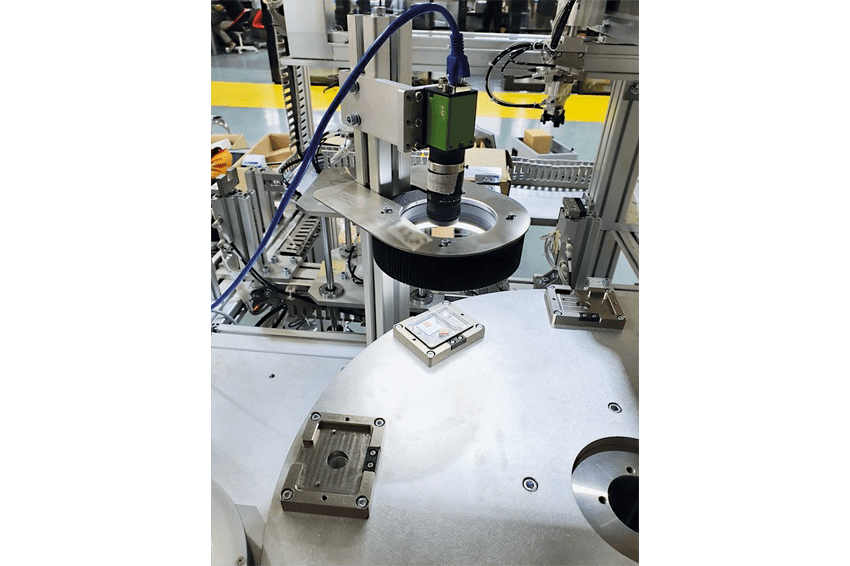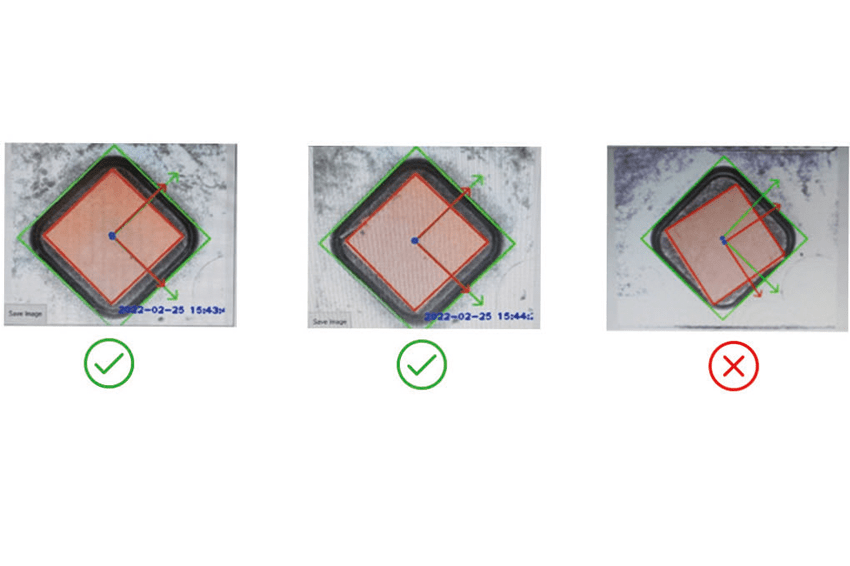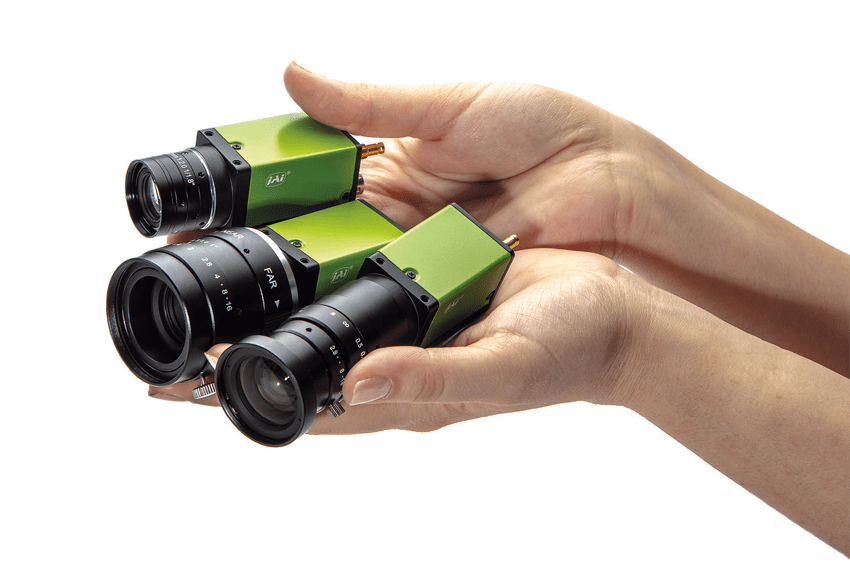Cameras Ensure Perfectly Placed Heat Sinks
14.04.2023 - Quality Assurance in Electronics
In an inspection system for the electronics industry, CMOS cameras ensure that heat-conducting pads bonded to an aluminum heat sink are present and have been perfectly positioned at the intended position.
The electronics industry is one of the key international industries and in many cases, it is the performance of its products that creates the basis for the functioning of many machines, systems and devices. Economical solutions are only possible if the quality of produced electronic components meets the specifications by 100 percent.
For various reasons, however, the quality control of electronic components can be tricky: The features to be inspected are often very small, the components are produced in high volumes, and they usually have to be inspected at relatively high speeds for reasons of production effectiveness. From an image processing point of view, this is further complicated by the fact that electronic components often at least partly consist of metallic components which, due to light reflections, can only be reliably inspected for defects by using optimally designed illumination and image processing systems.
Inspection System Checks Exact Placement of a Heat Conduction Pad
Malaysia-based company Rimburgs is a specialist in automation customisation for machineries and equipment and has gained great experience over many years in the optimal design of inspection systems for the electronics industry. In a recent project, the company implemented an inspection system for a customer to verify that a thermal pad previously placed on an aluminum heat sink and attached with adhesive was present and applied at the intended position.
“Our customer wanted to check and accurately measure the position of the thermal pad on an aluminum plate,” explains Sow Jing Zhi, Technical Support Engineer at Rimburgs. “If the thermal pad is outside the placement tolerance of 0.5 mm or has an angular deviation of more than 5 degrees, the produced part will be rejected. This error can occur, among other things, if the adhesive was not metered correctly or the heat-conducting pad was not fed optimally for placement.”
For building a fully automated and effective solution, it was clear to the developers at Rimburgs from the very beginning that this task could only be solved with the help of a suitable image processing system. The company had already realized numerous other projects in the past in which it had relied on industrial cameras from the Danish manufacturer JAI with consistently positive experiences, says Sow: “We were very satisfied with the quality of the JAI cameras and therefore decided to work with them for this project”, added Sow.
5 Megapixels with Shading and Color Correction
To check the position of the heat-conducting pads in this application, Rimburgs opted for a Go-X-5103C-PGE CMOS color camera from JAI, which, with a resolution of 5 megapixels and a global shutter, was able to deliver the required image quality.
The camera is installed at a working distance of 140 mm above the test object, and a diffuse ring light with a diameter of 130 mm as well as a C-mount lens suitable for megapixel cameras were used to ensure optimum image quality during image acquisition.
However, in addition to the high resolution and global shutter, there were other reasons why Rimburgs developers chose the JAI Go-X-5103C-PGE, underlines Sow: “Due to the mechanical structure, the captured images are inverted in the top view, so image inversion was required to ensure that the image could be correctly displayed. This camera provides that capability, as well as the necessary shading and color correction.” The JAI camera’s image sensor has color filters over the pixels in a standard Bayer RGB filter pattern. An algorithm on the host computer interpolates this information to produce color images, though the colors may vary a bit from the actual colors due to the estimations made by the interpolation routine. This is easily compensated by using the camera’s shading and color correction functions to ensure that the images are displayed realistically.
These correction features of the JAI Go-X-5103C-PGE also give the user additional confidence that the accurate, centered position of the thermal pad on the aluminum plate can be correctly determined. “Material variations of the aluminum can lead to high contrast differences on the aluminum surfaces, making it difficult to detect the specified position of the thermal pad. The JAI camera‘s proven shading and color correction minimizes this source of error,” says Sow.
Camera Series with Multiple Interfaces
The fact that Rimburgs has chosen JAI as its image processing supplier for this application is due not only to the technical features of the cameras, but also to the renowned quality of products manufactured in Japan, emphasizes the Rimburgs Technical Support Engineer. “A product manufactured with Japanese quality and technology gives our customers the necessary confidence, which is also underpinned by the six-year warranty that JAI gives on its cameras. This long period is unique in the image processing industry and was another important reason for us to choose JAI cameras.”
The Rimburgs-designed inspection system uses Go-X models with a GigE interface, but this camera series from JAI is not limited to that: Only recently, the Danish manufacturer introduced 24 new models, some of which are equipped with a CoaXPress 2.0 interface. Models of this series with USB3 Vision interface are also already available. 12 further Go-X versions with 5GigE (5GBASE-T) have already been announced. With a resolution range from 2.3 to 24.5 megapixels in monochrome and color, the JAI Go-X camera series thus offers a high degree of flexibility for many applications, both within and outside the electronics industry.
Author
Peter Stiefenhöfer, PS Marcom Services









